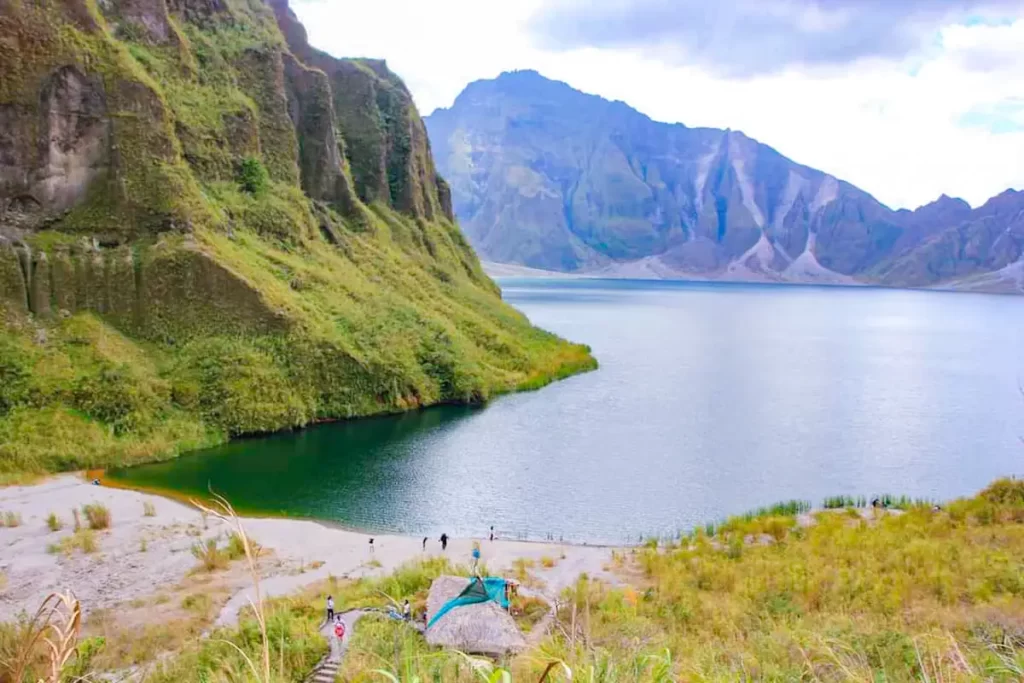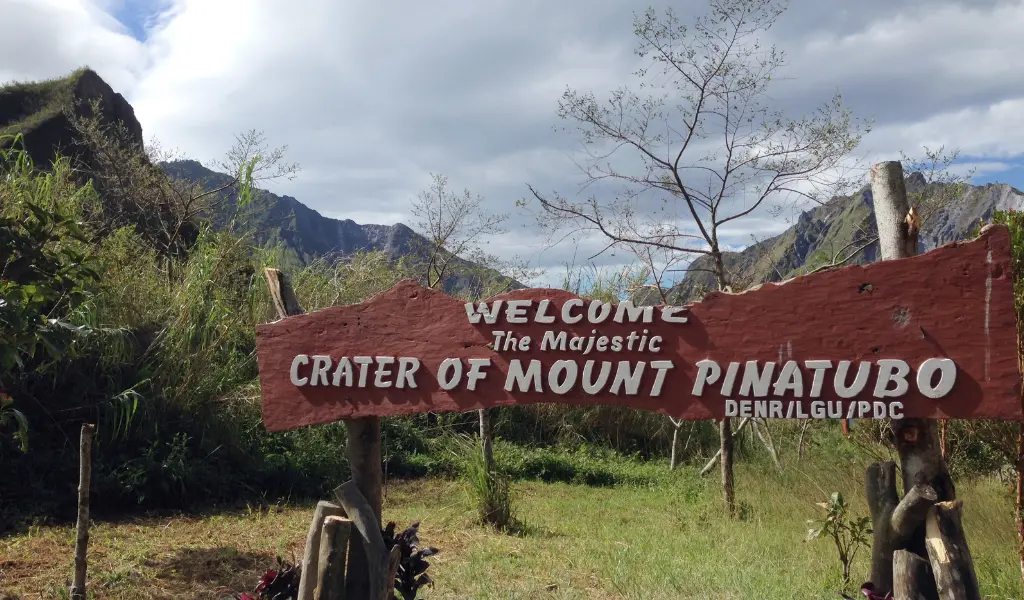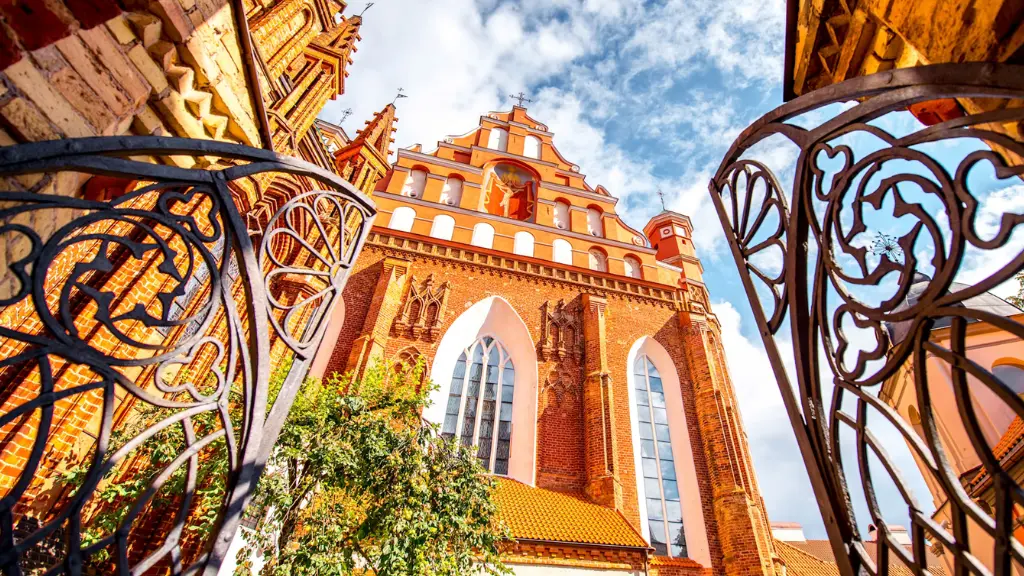Mount Pinatubo, once known for its devastating eruption in 1991, has transformed into one of the most awe-inspiring destinations in the Philippines. Its emerald-green crater lake, rugged landscapes, and fascinating history make it a bucket-list-worthy adventure.
If you’re considering hiking Mount Pinatubo, this guide will walk you through the experience and offer essential travel tips to help you plan your journey.
You May Also Like: Malapascua Island Travel Guide: Our Experience, Itinerary & Costs

Getting to Mount Pinatubo
Mount Pinatubo is located in the Zambales Mountains, about 3–4 hours north of Manila. Here’s how to get there:
- From Manila to Capas, Tarlac:
Take a bus bound for Capas, Tarlac. Victory Liner and other major bus companies operate routes daily. The journey takes about 2–3 hours. - From Capas to Sta. Juliana:
Once in Capas, ride a tricycle to Barangay Sta. Juliana, the starting point for Mount Pinatubo treks. The ride takes approximately 30 minutes.
Hiking Experience on Mount Pinatubo
The hike to Mount Pinatubo is an adventure filled with stunning landscapes and unique terrain.
1. 4×4 Jeep Ride
Your journey begins with a thrilling 4×4 jeep ride across the Crow Valley. This stretch offers breathtaking views of ash fields, lahar canyons, and volcanic rock formations. The ride lasts around 1–1.5 hours and sets the stage for the hike ahead.
2. The Trek to the Crater
The trek itself is moderate and suitable for beginners.
- Distance: 5.5 kilometers (one way).
- Duration: 2–3 hours, depending on your pace.
- Terrain: A mix of rocky paths, river crossings, and gentle slopes.
As you hike, you’ll be surrounded by unique volcanic landscapes. The final ascent to the crater is the most rewarding part, offering spectacular views of the lake below.
3. The Crater Lake
The emerald-green crater lake at the summit is the highlight of the trip. Formed after the 1991 eruption, the lake is both beautiful and serene. Swimming is not allowed due to safety concerns, but you can take in the scenery and capture unforgettable photos.
Best Time to Visit Mount Pinatubo
The best months to hike Mount Pinatubo are during the dry season, from November to May.
- Avoid Rainy Season (June to October): Heavy rains can make the trail unsafe and inaccessible.
- Start Early: Begin your trek early in the morning to avoid the midday heat and ensure a smoother hike.
Costs and Fees
Here’s a breakdown of typical expenses:
- 4×4 Jeep Rental: $80–$100 (good for 5–6 people).
- Guide Fee: $25–$30 per group.
- Environmental and Registration Fees: $10–$15 per person.
- Food and Water: $5–$10 per person (bring your own snacks and hydration).
For solo travelers, joining group tours can help split the costs.
What to Pack for the Hike
Prepare well for your Mount Pinatubo adventure:
- Comfortable Hiking Shoes: Ensure they’re sturdy and suitable for rocky terrains.
- Water and Snacks: Stay hydrated and fueled throughout the trek.
- Sun Protection: Bring sunscreen, a hat, and sunglasses.
- Lightweight Backpack: Carry essentials without overloading.
- Rain Gear: If visiting near the rainy season, pack a lightweight raincoat.
- Camera or Smartphone: Capture the stunning landscapes and crater lake.
Tips for a Safe and Enjoyable Hike
- Book with a Trusted Tour Operator:
Many local agencies offer guided tours. Choose a reputable one to ensure a hassle-free experience. - Follow Safety Instructions:
Always listen to your guide. Volcanic landscapes can be unpredictable. - Stay on the Trail:
Straying from the path can be dangerous due to unstable terrain and potential hazards. - Leave No Trace:
Help preserve Mount Pinatubo’s beauty by not littering. Carry your trash back with you. - Stay Hydrated:
The hike can get hot, especially during midday. Drink plenty of water to avoid dehydration.
Our Experience at Mount Pinatubo
Hiking Mount Pinatubo was an unforgettable experience. The 4×4 ride was exhilarating, with stunning views at every turn. The trek itself was manageable, offering enough challenge to feel accomplished without being overly strenuous.
Reaching the crater felt like stepping into another world. The vivid green waters, surrounded by rugged volcanic walls, were mesmerizing. We spent an hour at the summit, taking photos and soaking in the surreal beauty.
Cultural and Historical Insights
The 1991 eruption of Mount Pinatubo was one of the largest in history. It displaced thousands of residents and changed the surrounding landscape. Today, the area has been transformed into a symbol of resilience and natural beauty.
Interacting with the locals added depth to our journey. Many Aeta communities, indigenous to the region, live near Mount Pinatubo. Learning about their culture and way of life was a highlight of our trip.
Why Visit Mount Pinatubo?
Mount Pinatubo offers a unique combination of adventure, natural beauty, and history. Whether you’re a seasoned hiker or a casual traveler, this destination promises a memorable experience.
Its accessibility from Manila makes it an ideal day trip or weekend getaway for those seeking a break from city life. Plus, the surreal landscapes and stunning crater lake are unlike anything else in the Philippines.
Conclusion
Mount Pinatubo is a testament to nature’s power and beauty. The hike offers an escape into a world of rugged landscapes, rich history, and awe-inspiring views.
With careful planning and the right gear, your trip to Mount Pinatubo will be safe, enjoyable, and unforgettable. Ready to lace up your hiking boots and explore this iconic volcano?









